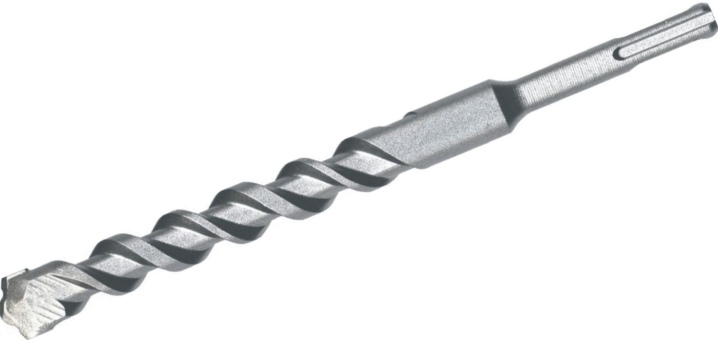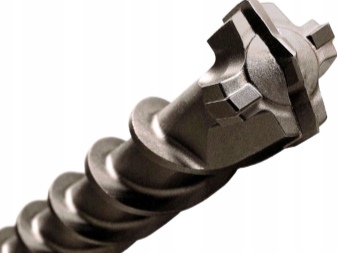All About SDS Drills

Often, in the process of carrying out various construction works, it becomes necessary to use all kinds of drills. These tools allow you to quickly and accurately make holes in structures for nails, self-tapping screws, and also make it possible to process the holes made. Today we will talk about SDS drills.

Peculiarities
The SDS drill is a small drill equipped with thin cutting elements that create indentations in a variety of materials, including concrete substrates, bricks and stones.
This model is most often used for rock drills. Like other varieties, it has a shank and a spiral designed to remove the remnants of destroyed material from the drilling site.



The cutting part of products with SDS shanks is made of carbide. It can be produced with different sharpening configurations and different total number of blades. In this case, the cutting edges are created in such a way that their ends are slightly rounded, in contrast to standard drills with the sharpest sharpening.
The shank is a part with which the drill is directly connected to the chuck of the apparatus. Depending on the type of fastening mechanism, this element can vary significantly in some design features.
On the shank of the product, special elements are additionally attached to attach to the chuck of perforators. Depending on the type of this component, the drills are divided into separate varieties (SDS, SDS-top, SDS-quick).

SDS shanks were first produced by the German company Bosch. This innovative development made it possible to quickly replace different drills in the rock drill.
A significant advantage of SDS products is their ability to move around their own axis with a small amplitude. This makes it possible to protect the chuck of the unit from possible shock loads, due to which the tool often breaks during operation.

Species overview
Often, drills of this type are sold in large sets, in which there are several varieties of such products at once, but they can also be purchased from hardware stores and individually. There are several types of SDS drills.


- SDS. This standard option is considered the most common. Its diameter is 10 millimeters. It has a shank with two small grooves. They are inserted into a 40 mm punch chuck. Shanks of this type have full compatibility with the same elements of the SDS-plus type.
- SDS-plus. This model is produced with a shank (diameter 10 millimeters). It also fits into a 40 mm tool holder. This sample has a total of 4 grooves - 2 open and 2 closed. The first option is needed for guides, the second is for locking balls. The contact area between the wedges of the chuck and the shank itself is 75 square meters. mm. The model is considered optimal for light rock drills, and the total length of the drill should be approximately 110-1000 mm, and their diameter should vary from 4 to 26 mm. The model is able to move freely along its axis with the required amplitude (in the tool holder, as a rule, it is 1 centimeter).
- SDS-top. This model is not considered a common option and is rarely used. The product is intended for medium-sized construction rock drills with replaceable cartridges. The shank diameter reaches 14 mm. As in the previous model, SDS-top provides only 4 slots - 2 open and closed slots.The area at the point of contact with the wedges is 212 sq. mm. SDS-top is capable of making recesses up to 16 mm in length.
- SDS-max. This type is quite often used during construction work. The model is designed for heavy machines, for drills with a large diameter. The diameter of the product is 18 millimeters. The total contact area with the wedges reaches 389 sq. mm. The sample is sometimes used for metal and concrete work. This part is fixed in the chuck of the unit by 90 mm. SDS-max has a total of 5 slots: 3 open and 2 closed. The model can freely rotate around its axis, in the apparatus cartridge the amplitude will be from 3 to 5 centimeters.
- SDS-quick. This sample differs from all other models in that instead of grooves, special projections are provided in it. This variety is rarely used. Bits, drills with a different shank (most often with a 6-sided 4-inch) can be attached to the holder.
- SDS-hex. The variety is used exclusively for jackhammers with a high impact energy value; it is not recommended for drills. It has large dimensions compared to other models. The sample can be suitable for careful processing of stone surfaces, concrete, asphalt, but also sometimes they work on wood.




How to choose?
When choosing such a tool, remember that each individual model may not be suitable for all jobs. Many SDS samples are suitable for cutting elements that are not suitable for general household cutting because they have a relatively large diameter.


Most often they are used in cases when it is necessary to make large depressions in concrete structures, granite surfaces.

Models SDS, SDS-max, SDS-plus can become optimal options for standard work. The last 2 options are considered similar. The difference between these models lies in the total number of grooves. SDS-max, as a rule, is produced with 5 such elements, and SDS-plus - with 4, they will also differ in dimensions. In addition, they can be used for different types of drills: the first option is taken for drills from 20 mm, the second option can be taken for edges up to 26 mm.

The following video introduces SDS-plus drills.













The comment was sent successfully.